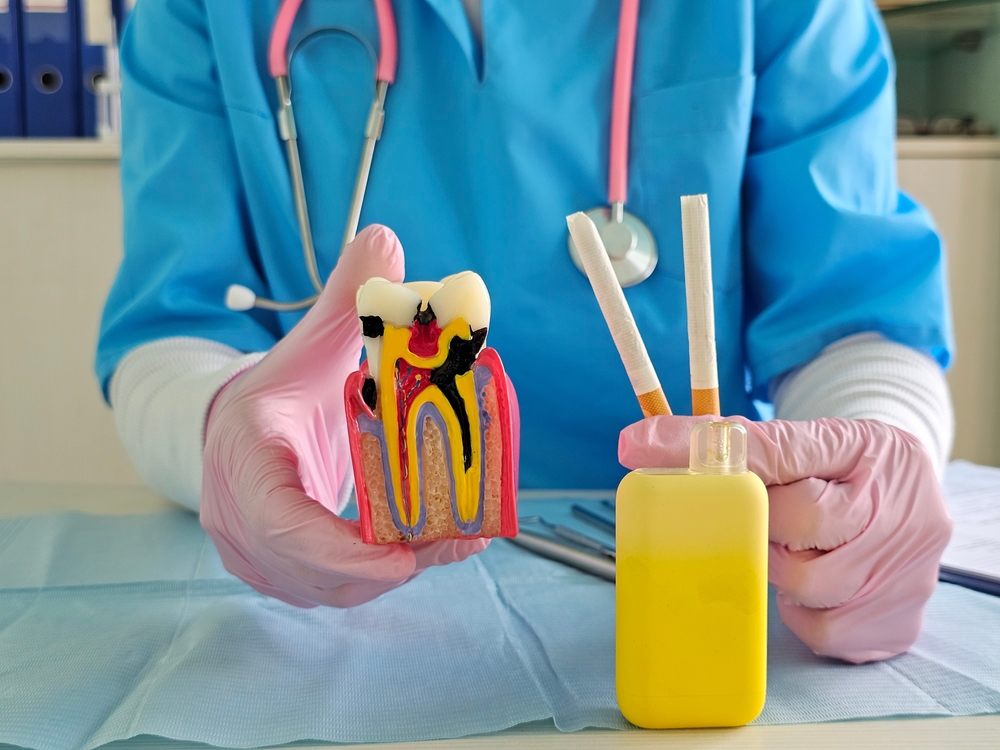
When it comes to maintaining a healthy smile, most people think about brushing, flossing, and regular dental visits. However, one habit can quietly undo all your efforts - smoking. Tobacco use is one of the most significant risk factors for periodontal disease, impacting both the health of your gums and the success of your dental treatments.
What Is Periodontal Disease?
Periodontal disease is an infection of the tissues that support your teeth. It begins when plaque builds up along the gumline. If not removed through daily brushing, flossing, and professional cleanings, plaque hardens into tartar, irritating the gums and causing inflammation.
Early-stage gum disease (gingivitis) may cause red, swollen gums that bleed easily. Left untreated, it can progress into periodontitis, where bacteria spread below the gumline and destroy the supporting bone structure. This can eventually lead to loose teeth or even tooth loss.
How Smoking Contributes to Gum Disease
Smoking interferes with nearly every aspect of your oral health. Here are some of the main ways it contributes to periodontal disease:
Reduced Blood Flow: Nicotine constricts blood vessels, reducing oxygen and nutrient delivery to gum tissues. This limits your body’s ability to fight infection and slows healing.
Weakened Immune Response: Tobacco use compromises your immune system, making it harder to combat bacteria that cause gum infections.
Altered Bacterial Growth: Smoking changes the bacterial composition in your mouth, allowing harmful strains to thrive and promote gum inflammation.
Masked Symptoms: Because smoking reduces blood flow, typical signs of gum disease such as bleeding may not appear, making the condition harder to detect until it’s advanced.
The Long-Term Effects on Oral Health
Beyond gum disease, smokers face an increased risk of:
Tooth loss due to bone destruction
Persistent bad breath (halitosis)
Stained teeth and buildup of plaque and tartar
Diminished taste and smell
Delayed healing after dental procedures
Oral cancer and precancerous lesions
The cumulative impact can dramatically shorten the lifespan of your teeth and affect both your smile and overall quality of life.
How Smoking Affects Dental Treatments
Smokers also have poorer outcomes from many common dental treatments. Periodontal therapy, bone grafts, and even dental implants are less successful in smokers because the body’s healing response is compromised. Smokers are more likely to experience implant failure, gum recession, and persistent infection following procedures.
If you’re considering restorative or cosmetic dentistry, quitting smoking can greatly improve your results and ensure your investment in your oral health lasts.
Steps Toward a Healthier Smile
Quitting smoking is one of the best things you can do for your oral and overall health. Here are some steps to take:
Seek Support: Your dentist or physician can provide guidance, resources, or referrals to smoking cessation programs.
Schedule Regular Dental Visits: Professional cleanings and exams allow your dental team to detect early signs of gum disease.
Maintain Excellent Home Care: Brush at least twice a day, floss daily, and use antimicrobial mouthwash to reduce bacteria.
Adopt a Healthy Lifestyle: Eating a balanced diet and staying hydrated supports gum health and strengthens your immune system.
Even long-term smokers can experience significant improvements in gum health once they quit. The body begins repairing itself within days, and gum tissue health can start to recover within weeks.
Get Personalized Periodontal Care in Camarillo
Smoking has a profound impact on your gums, teeth, and long-term oral health. By quitting smoking and maintaining regular dental care, you can protect your smile and reduce your risk of serious periodontal problems.
If you’re concerned about the effects of smoking on your gums or want to learn how to protect your oral health, schedule a consultation with John K. See, DDS. Visit our office in Camarillo, California, or call (805) 482-1984 to book an appointment today.










